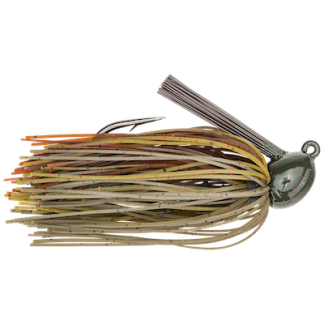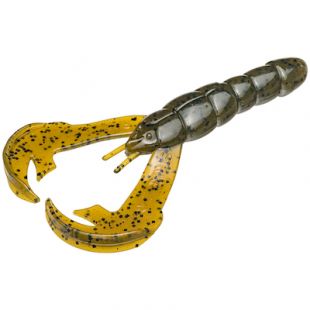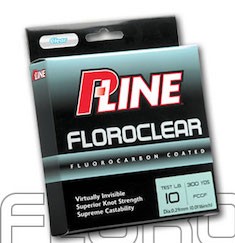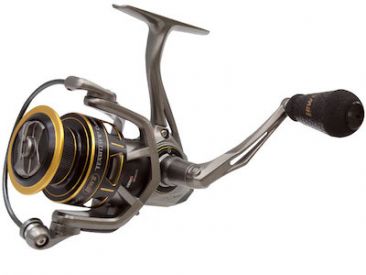News & Stories
Spring Walleyes In Rivers!
Posted by admin on March 30, 2020
SPRING RIVER WALLEYES
By Bob Jensen
I took a drive the other day and happened to travel over the bridge that spanned one of my favorite spring walleye rivers. There were several anglers within eyeshot of the bridge. It’s a small river, very similar to many of the small rivers that are found across the Midwest. It’s maybe a quarter mile wide at the widest, ten feet deep in the deepest hole, and has a dam every fifteen or twenty miles. These rivers have a fair to decent population of walleyes, and at this time of the year, a high percentage of that population can be found within a couple of hundred yards downstream of the dam. Rivers such as this usually aren’t great walleye fisheries. In fact, they’re usually better for smallmouth bass or channel catfish depending on the river. However, if you like to catch walleyes and you have a river like this near your home, April and into May is the best time of the year to catch walleyes in rivers like this. Here’s how you go about doing that.
Much of our fishing will be while wearing a pair of waders, although you can stand on shore or fish from a small boat. I have fond memories of catching hundreds of walleyes from a twelve foot johnboat and while wearing hip-waders in the spring in these small rivers over the past forty plus years.
Many of the walleyes will be in water about four feet deep. If there is some color in the water they’ll be a bit shallower: If the water is clearer, they’ll be maybe a tad deeper. Use bright colors, orange or chartreuses, in stained water, and natural colors, silver or white, in clear water. If you can see bottom in water a foot or two deep, consider that clear water.
I usually carry two rods when wading. I’ll be casting one rod and have the butt end of the other inside one of my waders. There will be a jig/plastic combo on one rod, a minnow shaped hard-bait on the other.
The jig rod will have a sixteenth ounce jig tipped with a plastic tail. A jig/minnow combination will work also, but it can be a nuisance wading with a minnow bucket, and the plastic is usually just as good and a lot easier to work with. I like a Mr. Crappie Grub this time of year. The tail wiggles even at slow speeds, and the wiggling tail seems easier for the walleyes to find in stained water. Swim this set-up slowly across the bottom. The cold waters of spring call for a slower presentation.
The other rod will probably have a KVD Jerkbait in the 200 size tied to it. This bait can also be fished slowly and will be more productive when the fish are active and for larger walleyes. Cast it out and start to retrieve it. This gets the bait near the bottom. Then fish it with jerks and brief two to three second pauses. Expect the strike to come right after a jerk.
I’ve also had success with a jig/minnow fished below a slip-bobber, especially in areas that have a lot of snags. The slip-bobber lets you fish slowly and will help to keep the jig out of some of the snags. If you do get snagged, you’ll probably be able to wade over to the snag and free the jig.
It’s best to move around as little as possible. Get into a casting position and work the area thoroughly before moving. You’ll have fish strike your bait with five feet of line out every now and then.
Chasing walleyes in small rivers is a great way to start a fishing season. Make sure that it’s legal to do so in your area, then get out and do it.
PHOTO CAPTION: In the spring, try a longer, thinner bait like these Walleye Elite Jerkbaits for walleyes.
To see new and old episodes of Fishing the Midwest television, fishing articles and fishing videos, go to fishingthemidwest.com
Go Big For Bigger Fish!
Posted by admin on March 18, 2020
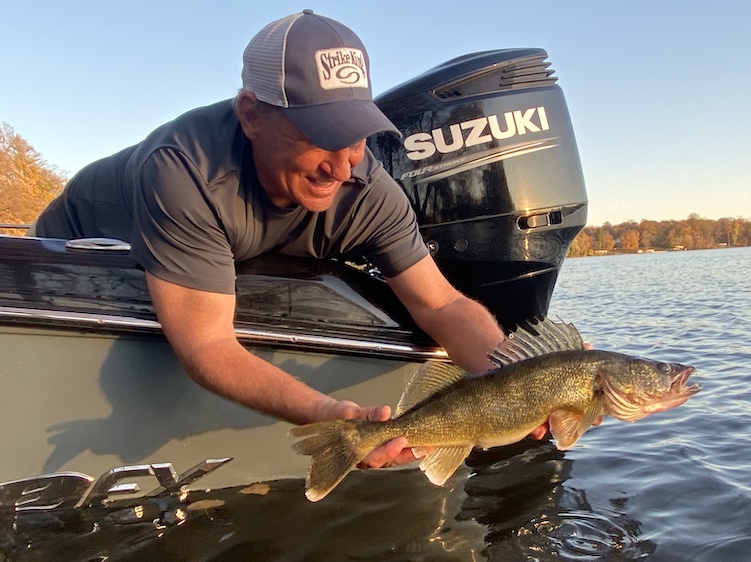
Go Big To Catch Bigger Fish!
By Mike Frisch
Recently, we filmed a late winter crappie fishing episode for Fishing the Midwest TV. Our goal was to catch crappies 12 inches long and bigger and one of the modifications we made to reach that goal was fishing jigging spoons rather than smaller jigs.
Our catch numbers decreased from previous days, but we met our goal as several bigger “slabs” came topside during the shoot. This experience has me thinking about ways this same strategy can be used to catch bigger fish during the open water fishing season too.
Tournament walleye anglers across the Midwest have been relying on bigger minnows when tournament fishing to put their “overs” (walleyes measuring over 20 inches) in the boat.
Several veteran tourney anglers I know rely on jigs and “regular” minnows, often shiners, to catch their “slot” fish (those under 20 inches). When over-sized fish become the target, they often switch to slip-sinker livebait rigs and bait them with redtail chubs or creek chubs in the 6 inch range, or even bigger!
Knowing this was working for several of my tournament fishing buddies, I had a dozen big creek chubs along late last summer on another TV shoot in northern Minnesota. A partner and I were fortunate to land on a bunch of 18-23-inch fish on out first spot and caught several in fairly short order pulling nightcrawlers on bottom bouncer rigs.
When the bite slowed, we broke out the livebait rigging rods and baited up with big chubs. The first pass through the fish, a fat walleye pushing 26 inches ate a chub and ended up being the shoot’s “star!”
Using bigger baits like big chubs has proven effective when fishing walleyes. This philosophy will often put bigger largemouth bass in the boat too.
Small plastic worms fished on tiny jig heads have taken the bass world by storm recently. Ned rigs, jigworms, and shaky heads are names often given this presentation. Regardless the name, clearer waters and increased fishing pressure on lots of lakes have made these finesse offerings the norm, rather than the exception, for many anglers.
However, when it comes to enticing bigger fish, a bigger, skirted jig tipped with some sort of trailer, the classic “jig-n-pig” set-up, is still is an effective method.
Yet again on another filming adventure last summer, a partner and I had put a couple dozen bass in the boat using Ned rigs. Wanting to upgrade the size of the fish caught, we traded our finesse spinning rod/reel and light line combos for heavier baitcasting rigs baited with big jigs and plastic trailers fished on heavy line.
Once again, our overall fish numbers went down a bit, but the size of fish caught definitely went up. On one particular weedy point, in fact, we put several bass in the 3 to 4 pound range in the boat in short order. This same point had produced only a handful of 13- and 14-inch fish earlier in the day. But, the bigger fish definitely showed themselves when we traded the 1/16-ounce jigs and tiny worms from earlier for ½-ounce Hack Attack Jigs tipped with Rage Craw
We made short pitches to the heaviest weeds on the point with these baits and often got hit on the jig’s initial drop. If no biters appeared on the original fall, we’d aggressively hop the jig a time or two and then reel back in and make another pitch.
The big fish, on this day at least, certainly preferred the bigger baits fished aggressively over the slowly fished finesse offerings.
Big baits don’t always produce big fish. However, as shown in the above examples, bigger lures certainly still merit a place in your tackle box. In fact, upsizing your baits and lures can probably lead to “upsized” catches this season!
And, as always, remember to include a youngster in your next outdoors adventure.
Mike Frisch hosts the popular Fishing the Midwest TV series and is a co-founder of the Bass Pro Shops and Cabela’s School of Fish. Visit www.fishingthemidwest.com to see all things Fishing the Midwest.
Photo – Big walleyes like this often prefer big baits!
Simple spring walleyes
Posted by admin on March 18, 2020
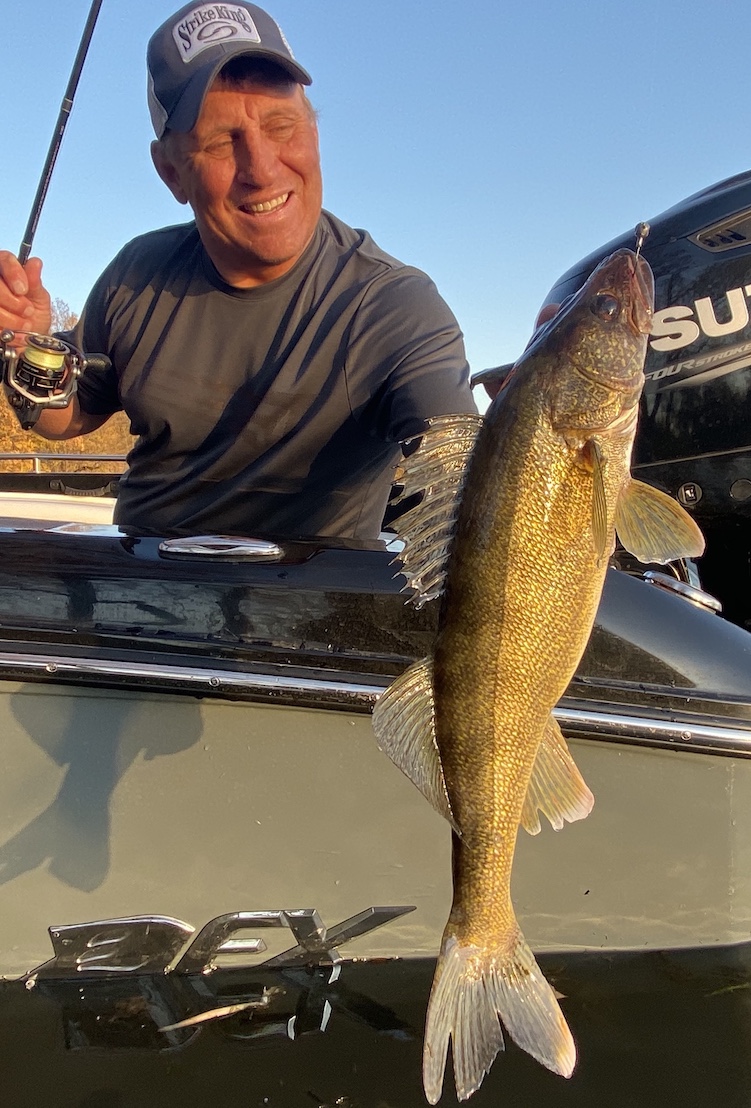
Simple Spring Walleyes!
By Mike Frisch
There are lots of things to love about early season walleye fishing! For one, spring walleye angling often signals the return of open water fishing for another year. And, walleyes in the spring are often aggressive biters and easily accessible in fairly shallow water.
Another thing that I really like about this time frame is the simplicity of equipment needed. Many spring walleyes fall for simple jigging presentations In fact, some of the best walleye anglers I know go fishing in the spring with their favorite light jigging rod, a handful of jigs, and some bait!
“Light jigging” rods for most anglers usually measure 6 1/2- to 7-feet, are of medium light power, and feature fast or extra fast actions. Because they fish light 1/16 to ¼ -ounce jigs well, they often get referred to as “light jigging” or simply “jigging” rods.
Regardless the name, this rod style is a favorite when pitching jigs to shallow walleyes. Early season walleyes will often invade shallow cover like rocks and emerging weeds and holding the boat away from that cover and then pitching a jig to them is often a great way to catch them.
Lots of times this situation calls for a small 1/16- or 1/8-ounce jig tipped with a minnow and fished slowly using a lift and fall method.. Another option, however, is pitching a bit larger jig paired with a plastic trailer and slowly swimming it back. This swimming presentation often requires a bit heavier jig. Regardless whether pitching “meat” or plastics to the shallows, a light jigging rod gets the call.
Shallow walleyes and pitching jigs go hand-in-hand in spring. Walleyes holding in a bit deeper water, say along shoreline drop-offs in 6 to 10 feet, are also susceptible to jigs and minnows. Rather than pitching to these fish, I prefer to slowly troll or drift along these drop-offs with the same 1/16- to 1/8-ounce jig and minnow combination, but this time fished on a long line behind the boat. Once again, the light jigging rod works well for this fishing style.
Pitching or slow trolling with light jigs is a “feel” game in both situations, so the jigging rod described above should also be lightweight and sensitive. Lew’s has a new series of technique-specific walleye rods in their Speed Stick series. I had a chance to sample several models late last fall and was impressed with their quality, sensitivity, and affordable price tag. In fact, the 6’7” jigging model quickly became my new favorite “jigging” rod!
The right rod is important for early season walleye fishing success and so it the right reel spooled with good line. Anglers debate what line is best for jigging, with monofilament, braids, and fluorocarbon lines all having fans. I’ve been using 6-pound Floroclear, a copolymer line with fluorocarbon coating with good success. This line behaves much like a monofilament, so it handles well on spinning gear. And, the fluorocarbon coating makes it nearly invisible under water.
I fish this line on a quality spinning reel that’s lightweight and has a super smooth drag that I trust will protect light line when a big shallow spring walleye inhales a jig. My reel choice is the Team Lew’s Custom Pro Speed Spin that has those qualities and is affordable too.
Light jigs fished for walleyes is a rite of spring for many anglers. And, using the right rod/reel and line set up like the one detailed above can help anglers feel more spring bites and put more jig-hooked walleyes in the boat!
As always, good luck on the water and remember to include a youngster in your next outdoors adventure.
Mike Frisch hosts the popular Fishing the Midwest TV series and is a co-founder of the Bass Pro Shops and Cabela’s School of Fish. Visit www.fishingthemidwest.com to see all things Fishing the Midwest.

